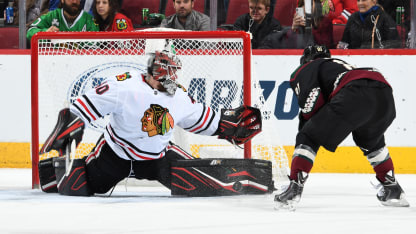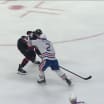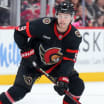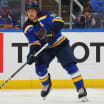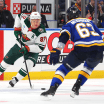Even Lehner's preferred statistic relies on raw save percentage, however, and most NHL goalies see that as a compromised number because it lacks any shot-quality context. Some goalies insist they don't pay attention to anything beyond the result at the end of the game.
"Wins means everything," said Vancouver Canucks goalie Jacob Markstrom, who dismisses many stats used to analyze goaltending. "It's about being consistent and it's about winning hockey games and when you're having an off day to still be able to come up with one more save, let in one less goal, than the other guy."
Of course, wins are influenced heavily by the team's performance and can be a little easier to come by when your team scores a lot of goals.
That brings us to another new statistic the League is using this season: Goals For Average (GFA), which measures how much support a goalie receives. Samsonov leads the way here as well, with an average of 3.96 goals per game by the Capitals when he is in the net (minimum 10 games played by goalie). Jimmy Howard of the Detroit Red Wings is last among 61 goalies to play more than 10 games this season with a GFA of 1.91.
As for judging the shots faced, goalies would like to see more shot-quality context as part of the analysis.
"You need to dig deeper into it then just look at straight save percentage and goals-against," Jake Allen of the St. Louis Blues said. "Obviously wins are what makes or breaks you in this League but a lot of teams play different. Some teams give up a lot of shots, some give little but a lot of quality. So if you're studying goaltending, I think you need to look at quality over quantity, and that's where you can really get better detail on how a goalie is playing."
Progress in those areas is being made and could become more rapid with the introduction of puck and player tracking, scheduled to debut during the 2020 Stanley Cup Playoffs.
As teams get more insight, from information in the public domain or propriety data created by NHL teams or outside companies, the ways in which teams try to create offense in general or attack a specific goalie as part of a scouting report already are changing dramatically. That type of data is being used by coaches and goalies to isolate trends that regularly are leading to goals-against, as well helping to find solutions through altered tactics or the development of new shot-stopping techniques.
Such information also can provide a better measurement of goaltending performance relative to shot quality, including another element valued by Lehner: the scoring efficiency of shots a goalie can see clearly for more than half a second.
"That's a big thing for me," Lehner said. "The other team is going to have to do something good to beat me, and clear-line shots, I don't want that to be able to beat me."
Markstrom has no such concerns. While the new batch of stats have excited some goalies and many of those that analyze the performance of goalies, Markstrom is more concerned with how he feels about his play, not what any number says about it.
"I don't know and I don't care, to be honest," Markstrom said.
